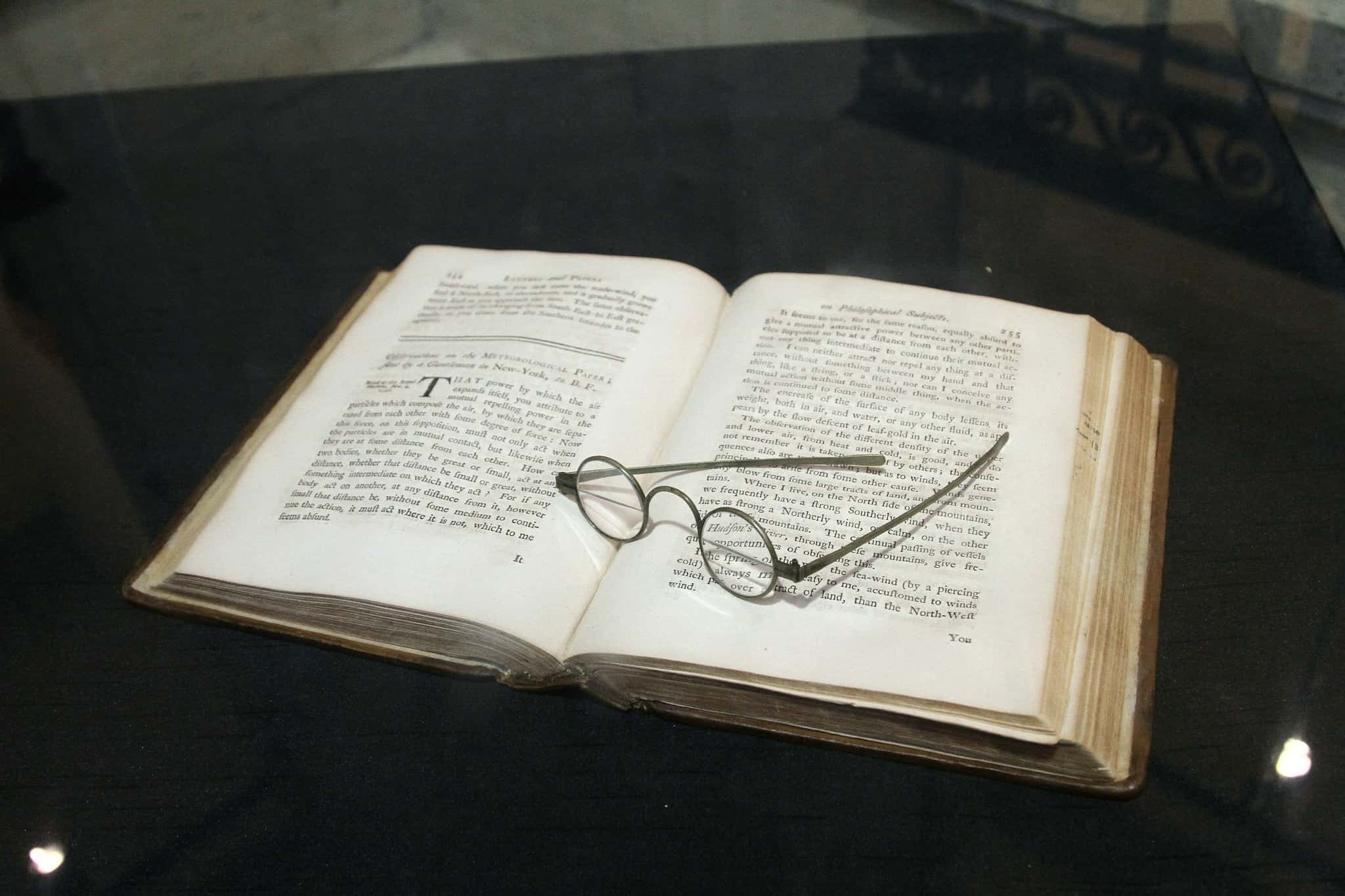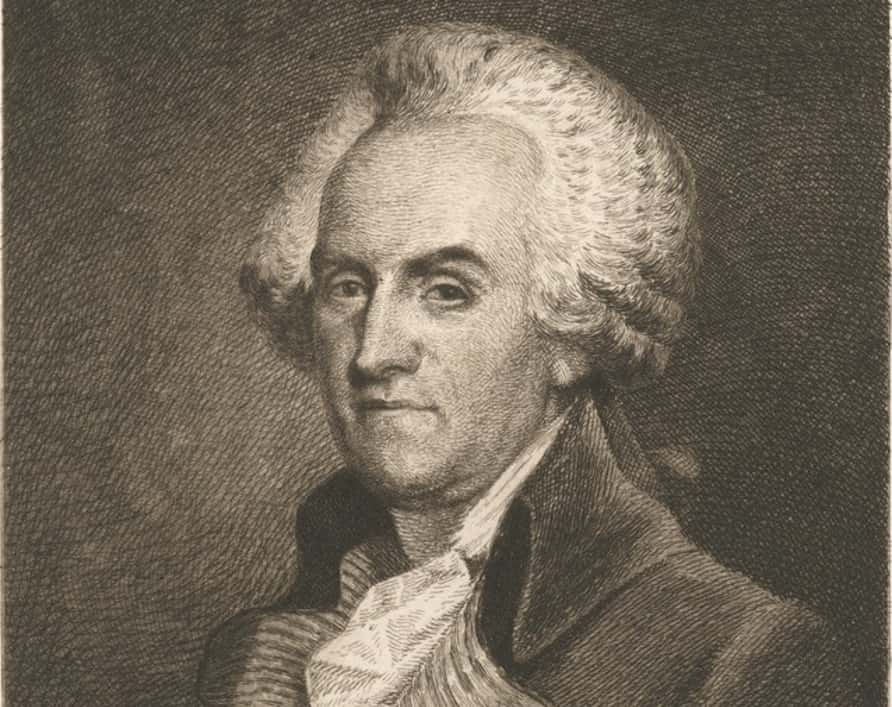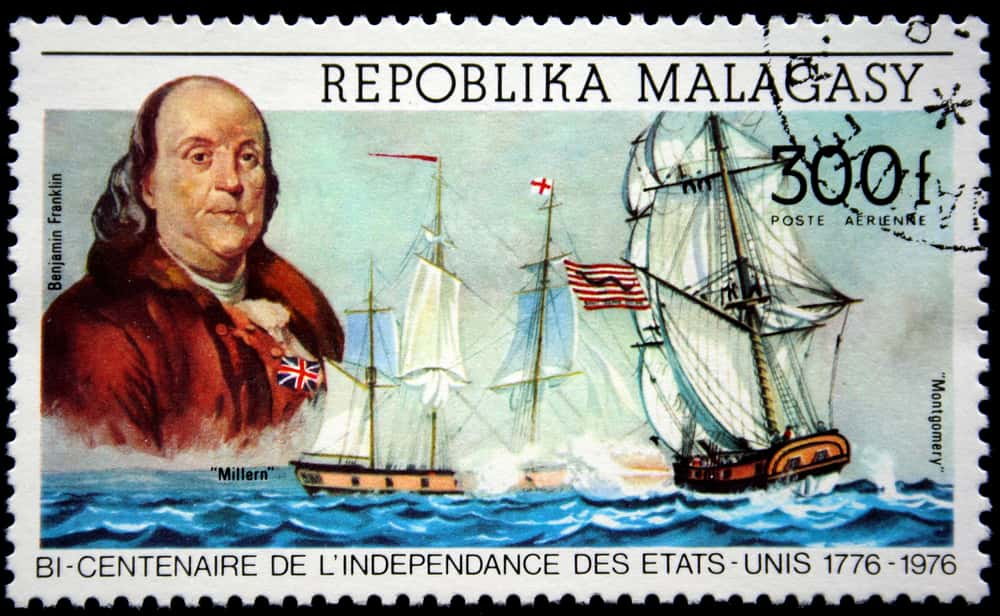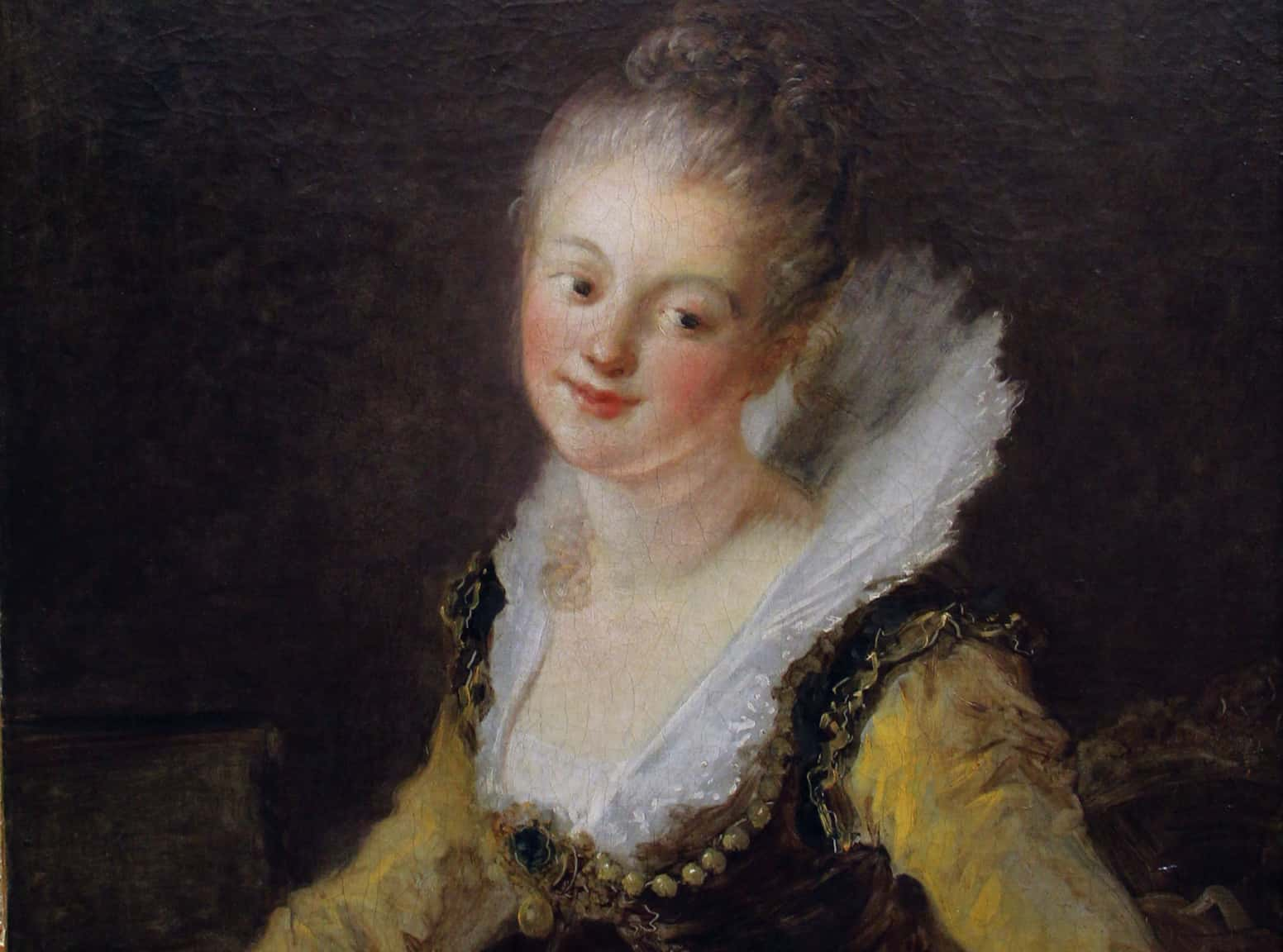"Dost thou love life? Then do not squander time, for that is the stuff life is made of."—Benjamin Franklin
Few of the American Founding Fathers were as accomplished as Benjamin Franklin. Though he was never president, he was instrumental in the creation of the United States, and there was seemingly nothing that this true renaissance man couldn't do. Read on to discover 42 facts about one of the greatest men to ever come out of The United States of America.
Benjamin Franklin Facts
42. Renaissance Resume
In addition to being one of the Founding Fathers of the United States, Benjamin Franklin (1706-1790) boasted a mile-long resume of interests and achievements. He was a writer, printer, politician, postmaster, inventor, scientist, diplomat, activist, mathematician, statesman, composer and a real funny guy.
41. Full House
Franklin grew up in an extended family composed of 17 children. His father Josiah Franklin had 7 children from his first marriage and another 10 from his second marriage to Abiah Folger, Benjamin’s mother. Benjamin was the 15th child and the youngest son.
40. No School
Benjamin Franklin was largely self-educated and received only two years of formal schooling at the Boston Latin School and after that at George Brownell’s English School. Yet, he would go on to receive honorary degrees from Harvard, Yale, the College of William and Mary, the University of St. Andrews and Oxford. He would also be instrumental in the founding of what is now the University of Pennsylvania, an elite Ivy League college.
39. Sibling Rivalry
By modern day standards Benjamin Franklin was abused at the hands of his older brother James. Apprenticed to James’ Boston printing shop at the age of 12, Benjamin was forced to work grueling hours and was beaten when his brother was displeased with him. Historians suggest that James was jealous of his younger brother’s superior gifts. To James’ credit his publication, The New-England Courant, which he founded at age 15, was one of the first newspapers in the American colonies and often presented bold political views. At 17 Franklin ran away to Philadelphia, where his own publishing enterprise would later begin.
 Flickr, Internet Archive Book Images
Flickr, Internet Archive Book Images
38. His Feminine Side
When Franklin’s brother refused to print a letter from Benjamin in The New England-Courant, Franklin began to send missives under the guise of a middle-aged widow, using the pen name “Silence Dogood.” The letters, which offered plainspoken reflections on marriage, women’s rights, religion and other subjects were spectacularly well received and even garnered several marriage proposals from admiring readers. Some of his other feminine pen names include Alice Addertongue, Martha Careful, and Busy Body.
37. Fugitive!
In 1723 Benjamin Franklin became a fugitive. It was against the law for him to run away from his brother’s shop, where he was indentured. Nonetheless, he fled, sailing from Boston to New York. He then walked across New Jersey and hopped another boat to Philadelphia. His future wife, Deborah Read, saw him on the street that day in October, wet and unkempt, noting his strange appearance but never imagining that seven years later they would form a union. Franklin quickly found employment as a printer’s apprentice in Philadelphia.
36. Out of Wedlock
Though Franklin never officially married, he and Deborah Read maintained a common-law arrangement for 44 years. Read was unable to marry Franklin because her first husband, a reprobate to named John Rogers, had absconded and could not be found in order to finalize a divorce. Franklin already had an illegitimate son, who was brought into the home with Deborah. Together Benjamin and Deborah had two children, Sarah and Francis.
35. Power of the Press
Franklin became an influential voice and a wealthy man through his publications, including the Pennsylvania Gazette, which he bought in Philadelphia when only 23 years old. His later newspaper, the Pennsylvania Chronicle, was known for its fiery support of revolution and its disparagement of British policies.
34. Mixed Feelings
Franklin was not particularly gung-ho about the American Revolution until after the Second Continental Congress in 1775. Prior to that point, unlike his fellow Founding Fathers, he had espoused the preservation of the empire, encouraging compromise between the colonies and Great Britain. Between 1757 and 1775, he was the Colonial Agent in Great Britain, representing at various times Pennsylvania, Georgia, New Jersey, and Massachusetts. Some colonial patriots never quite trusted him. Some even suspected that he was a spy for the Crown.

History's most fascinating stories and darkest secrets, delivered to your inbox daily.
33. Perennial Bestseller
For a number of years the only book that sold more copies in the American colonies than Benjamin Franklin’s Poor Richard’s Almanack was The Bible. The almanac, printed in pamphlet form from 1732 to 1758, contained weather forecasts, household hints, poems, puzzles, astronomical and astrological information, and other types of diversions. The almanac was published under the pen name “Richard Saunders” or “Poor Richard.”
32. Let There Be Light
One of most Franklin’s most notable inventions began with an experiment that showed that lightning is actually electricity. During a thunderstorm he attached a metal rod to the top of a kite and an iron key to the bottom. The metal rod drew electricity from the storm, which was conducted through the cord of the kite once it got wet. Based on this experiment Franklin devised the lightning rod, used to protect buildings from lightning strikes. Later, employing a device known as a Leyden jar, Franklin was also able to capture and discharge electricity. He wasn't the first to do so, but he was the first to call it a battery, coining the term.
31. Like a Fish to Water
Though established in 1964, centuries after Franklin’s life, the International Swimming Hall of Fame counts Benjamin Franklin among its honorary inductees. An avid swimmer since his boyhood days in Boston, Franklin brought his love for swimming to his posts in England, taking daily swims in the Thames. At the age of 11, he invented a lily pad-shaped swimming fin worn on the hands. He was an advocate of swimming instruction for all children.
30. Post Haste
Postmasters, who were often also newspaper publishers, had a lot of power back in the British colonies. They could decide which newspapers could be delivered for free—or not delivered at all. In 1737 Franklin was appointed Postmaster of Philadelphia by the British Crown Post. In this capacity he made numerous improvements in the delivery of mail, including the establishment of the penny post, which charged a fee of one penny for home delivery. He also improved accounting methods, surveyed mail routes, and instituted round-the-clock movement of mail. Fired in 1774 by the British for his revolutionary sentiments, Franklin was appointed Postmaster General by the Second Continental Congress a year later.
29. A Visionary Idea
Known as “double spectacles,” Franklin invented bifocal eyeglasses by having his optician take the lenses from his reading glasses and his distance glasses, cut them in half horizontally and mount them into frames. The section of lens at the bottom was for reading, while the upper lens served for distance.
28. Great Minds
Today’s American Philosophical Society, established in 1743, was a branch of a club originally formed by Franklin and twelve accomplished intellectual friends. The members of the Junto Society, also known as the Leather Apron Club, came together for the purpose of discussing important moral, political and philosophical issues. Their practical goal was the improvement of society, and their efforts led to the creation of important public projects including the first lending library, the volunteer militia, Pennsylvania Hospital, and the Union Fire Company.
27. Change of Heart
From about 1735 until 1781 Franklin was a slave owner with six slaves in his household. After visiting a black school with his friend Samuel Johnson, his ideas about Africans began to evolve. In 1763 he espoused the then-controversial notion that African and white children were equal in their capacity to learn. Franklin became an outspoken abolitionist and in 1787 became the President of the Philadelphia Society for the Relief of Free Negroes Unlawfully Held in Bondage, commonly known as the Abolition Society. This was the first such society in the United States and was the model for others to come. Up until his death in 1790 Franklin worked at petitioning Congress to effect an end to the institution of slavery.
26. How Far Have We Gone?
In efforts to determine the most efficient postal routes, Franklin devised the first odometer, which measured distance traveled by vehicles based on the number of rotations of the wheels.
25. The Sound of Music
Of all his inventions, Franklin claimed to be most proud of his creation of the glass armonica, a musical instrument constructed of 37 different sized glass orbs. Beethoven, Strauss, and Mozart composed music for this unusual instrument, which had a sound likened to that which a finger makes when rubbing a rim of glass. The first prototype was built by a London glassmaker in 1761.
24. The Face of Success
Benjamin Franklin is only one of two American non-Presidents to be featured on paper currency of the United States. His face peers out from the $100 bill. Alexander Hamilton is seen on the $10 bill. Franklin’s profile was also etched into the half dollar from 1948 to 1963.
23. Frank(lin) Advice
A letter written by Franklin to a young friend in 1745 giving advice on how to manage his libido was cited in 20th Century anti-censorship court decisions. The letter, still unpublished in the 19th Century due to its sexual content, advised the young man to find a wife. If that failed, a mistress could satisfy his sexual needs; however, Franklin recommended an older mistress, who could offer more interesting conversation, greater discretion and reduced chance of pregnancy.
 Flickr, Internet Archive Book Images
Flickr, Internet Archive Book Images
22. The Sorrow of Sons
Franklin suffered a devastating loss when his four-year-old son Franklin, born to Deborah, died of small pox in 1736. However, Franklin once claimed that the greatest hurt of his life was the refusal of his older son William to support the revolution. William was Franklin’s illegitimate son, born prior to his common-law marriage to Deborah Reed. He was raised in the home of his father and Deborah.
21. Eat Your Vegetables!
Franklin became a vegetarian at the age of 16 inspired by a book he came across while working as a printer’s apprentice. The book, written by Thomas Tyron, promoted the health benefits of a vegetable diet as well as the moral responsibility of humane treatment of animals. Eating vegetables also saved him money, which he could use to purchase more books. Franklin did not adhere to a vegetarian diet at all times, but returned to it periodically to promote “clearness of ideas and quickness of thought.”
20. Heating things Up
In colonial American people used fireplaces to heat their homes. In efforts to make a more efficient system, Franklin created a freestanding cast-iron stove, which he referred to as the Pennsylvania Fireplace. The stove greatly reduced the amount of wood needed in traditional fireplaces and cut down drastically on hazards. Reconfigured by David R. Rittenhouse in the 1780s, the essential element of the stove was unchanged and to this day the device is known as the Franklin Stove. At the time of his invention, Franklin turned down an offer to patent and profit from his invention, sufficiently satisfied by its success and service to the communal good.
19. Ahead of His Time
Franklin was an early proponent of innoculation for disease, specifically smallpox, which broke out in Boston in 1721 and again in 1730. The highly controversial inoculation procedure involved taking fluid from the vesicles of a person infected with the disease and implanting them via an incision in the skin of a healthy person. Research suggests that Franklin’s wife did not share his faith in inoculation, and that Franklin was tortured with remorse for not insisting that their child Francis be inoculated. The death of Francis was devastating to Franklin, and there is evidence to suggest that this may have contributed to his eventual estrangement from his wife.
18. Superstar
Franklin was a superstar in France. Arriving in 1776 to elicit French support for the revolution, he was admired for his intelligence, wit and inventions but also for being a “natural man,” seen as embodying the bold spirit of a frontiersman. Franklin liked this image and made the most of it, sporting a coonskin cap when in Europe. "My picture is everywhere, on the top of snuff boxes, on rings, on busts,” he once wrote to his daughter, remarking on his celebrity. “My portrait is a best seller. Your father's face is now as well known as the man in the moon."
17. Trend Setter
Franklin’s signature coonskin cap was so admired in France that women began to wear oversized wigs styled to resemble the furry headgear. In 1778, after signing the Treaty of Alliance and the Treaty of Amity and Commerce, Franklin took to wearing a simple white cap, which soon became the rage amongst Parisian men.
16. Fear of the Sea—or Something Else?
Franklin’s wife Deborah had a fear of the sea, which may have prevented her from traveling to Europe with her husband on his many trips. However, some historians suggest that her plainness and lack of sophistication would have been out of place in the glittering European society in which her husband circulated. Deborah remained in Philadelphia during her husband’s lengthy trips, and for 18 of their 44 years of marriage, they lived apart.
15. Traveling Companions
Franklin was 70 years old when he was dispatched to Europe in order to secure a formal alliance and treaty with France that would guarantee help in the war against England. But he brought some young blood along with him; his traveling companions were his 16-year-old grandson William Temple Franklin, the illegitimate son of his own illegitimate son, and his daughter Sarah’s 7-year old son. Franklin’s indefatigable diplomatic efforts eventually paid off in 1778 with the signing of the Treaty of Amity and Commerce and the Treaty of Alliance without which the war for independence might have been lost.
14. Life of Intrigue
Franklin was constantly spied on by the British during his mission in France. Couriers vetted by the French government would make a detour on their trip to the docks and deliver his letters to the British embassy. The wax seals would be removed by a chemical procedure and replaced after the contents were read. Aware of the espionage around him, Franklin once joked that he wouldn’t care if his French valet were a spy, as long as he was an adept valet.
13. Quotable Quotes
Many of Franklin’s wise and witty quotes are still heard today. Here a few of the most familiar ones: “Three may keep a secret if two of them are dead,” “A penny saved is a penny earned,” “Well done is better than well said,” “By failing to prepare, you are preparing to fail,”
12. Soup Bowls
Franklin loved the sea and made eight trans-Atlantic voyages. During his last voyage, he put together a collection of notes he entitled “Maritime Observations” which included scientifically sound suggestions to improve ocean travel. Many notes had recommendations for avoiding disasters at sea such as the creation of watertight compartments to contain damaging leaks, methods for avoiding fires from lanterns and candles and systems for evading icebergs. He designed experiments to improve sail design and the efficacy of anchor cables. He even came up with a design for soup bowls that wouldn't tip over in a choppy sea.
11. Speaking of Inventions
One of Franklin’s innovations that was not a smashing hit with the public was a phonetic alphabet of his own invention which attempted to simplify English spelling. Franklin’s new alphabet eliminated six consonants and added six new letters. In a 1779 essay he debuted what he called the “Scheme for a New Alphabet and a Reformed Mode of Spelling.”
10. International Ladies’ Man
Franklin had several serious flirtations in the various countries in which he lived. One was with the lively and intelligent Catharine Ray. She was 23 years old when Franklin was 48. Briefly stranded in a snowstorm together in Rhode Island in 1754, Franklin soon put a halt to the blooming romance and adopted a safer, more paternal attitude. While working for the colonies in Britain in 1757, he enjoyed a special relationship with the clever 18-year-old Polly Stevenson, the daughter of his landlady. And while when living in Paris when in his 70s, Franklin was pursued by a beautiful and musically talented Parisian named Anne-Louise d'Hardancourt Brillon de Jouy. There is no evidence that these relationships went beyond mutual admiration.
9. Two Sides of the Coin
In 1787 Franklin designed the first official United States coin known as the Fugio cent. One side depicted 13 linked circles, symbolizing the colonies with the motto, “We Are One.” The inscription on the other side of the coin read: “Mind Your Business.”
8. Turkey Talk
Franklin did not support the adoption of the eagle as the national symbol of America, asserting that it was “a bird of bad moral character” and likening it to lazy, thieving and cowardly human beings. Contrary to popular myth, however, he did not propose that the turkey replace the eagle as the American symbol. It is true though that in a letter to his daughter, he did extol the virtues of the turkey compared to the eagle and did comment that the eagle depicted on the design selected for the Seal of the President of the United States resembled a turkey.
7. Thirteen Virtues
Franklin’s brand of Christianity was less about doctrine and more about moral behavior that would positively impact society. He composed a list of 13 virtues which he believed all people should embrace: temperance, silence, order, resolution, frugality, industry, sincerity, justice, moderation, cleanliness, tranquility, chastity, and humility.
6. Just in Case
The modern-day insurance industry owes a debt of gratitude to B. Franklin. In 1751, in concert with the Union Fire Company, Franklin spearheaded the establishment of the first fire insurance company in the colonies. Franklin went on to promote other types of mutual insurance, such as annuities, life, and crop insurance. In Poor Richard’s Almanack, under the pen name of Silence Dogood, he advocated for insurance to help widows and orphans.
5. Nude “Air Baths”
Unlike most people of his time, Franklin did not believe that chilly air was the cause of the common cold. In fact, Franklin espoused the use of nude “fresh air baths” to promote health. In 1776, he was forced to share a room with John Adams, a fellow member of the Continental Congress and future President of the United States, who wanted to keep the windows shut. Franklin shared his “Theory of Colds,” which identified their cause as germs from people, animals and lack of hygiene. Franklin went on to assure Adams that, in fact, it was healthy to sleep in a room full of cool, fresh air.
4. Practical Theology
In 1790 six weeks before his death, Franklin was asked to clarify his religious beliefs in writing by Ezra Stiles, the Calvinist president of Yale College. Franklin wrote that he believed in a providential God, who should be worshipped and in the immortality of the human soul. He extolled Jesus as the greatest moral teacher in history but expressed doubts about his divinity. He then wittily added that he expected to learn quite soon whether he was right about this or not.
3. Unsung
France mourned the passing of Benjamin Franklin in 1790 with far more ceremony than did the United States, which never duly recognized his service to the nascent country. The French National Assembly declared three days of mourning and sent numerous eulogies to the United States. President George Washington forwarded the French eulogies to Congress, but the House of Representatives refused to institute a period of mourning in America despite approval by the Senate.
2. Signed and Delivered
Franklin is the only one of the Founding Fathers who signed all the essential documents that led to the establishment of the United States. These include the Declaration of Independence, which he helped draft (1776); The Treaty of Alliance with France, which assured material aid in the war against Britain; The Treaty of Paris, establishing peace between Great Britain and France; and the United States Constitution (1787).
1. Bones in the Basement
When excavating Franklin’s house, people were horrified to find the skeletons of 15 people in his basement. Franklin had been likely burying the cadavers from his young protégé William Hewson's anatomy school. The bodies were probably procured through grave robbers since anatomy was not an accepted field of study at the time. It is generally assumed that Franklin was aware of Hewson’s scientific pursuits.
Sources: 1, 2, 3, 4, 5, 6, 7, 8, 9, 10, 11, 12, 13, 14, 15, 16, 17, 18, 19, 20, 21, 22, 23, 24, 25, 26, 27, 28, 29, 30, 31, 32, 33, 34, 35, 36, 37, 39, 40, 41, 42, 43, 44, 45, 46, 47, 48, 49, 50, 51, 52, 53, 54


















































